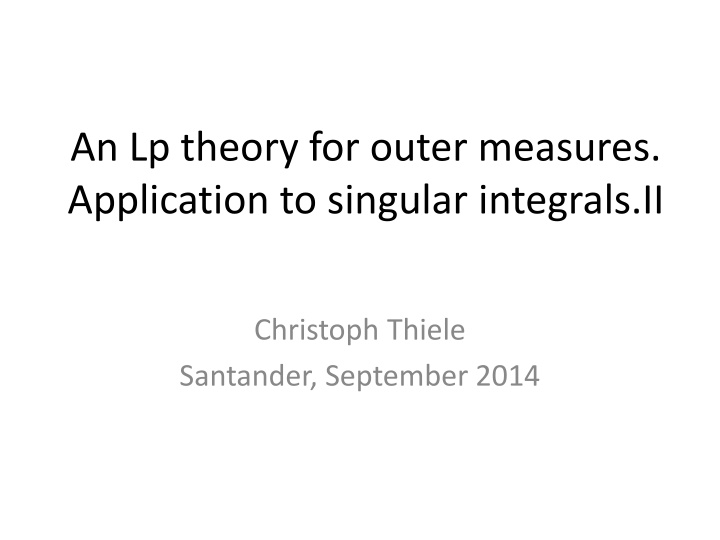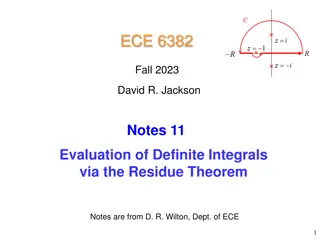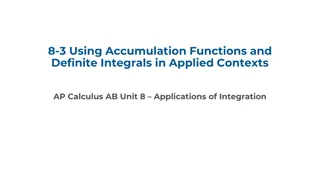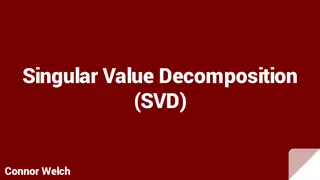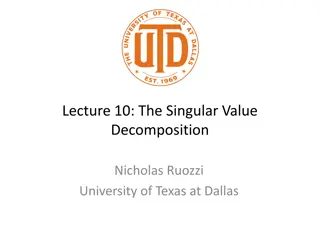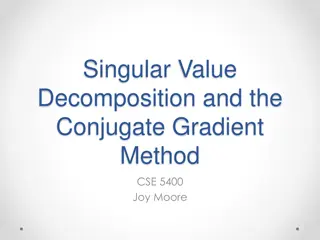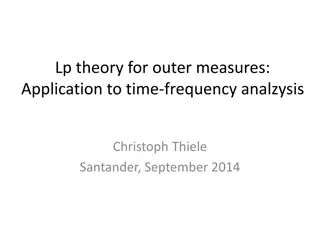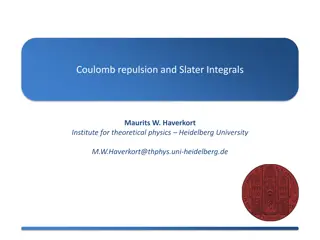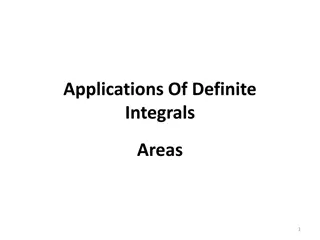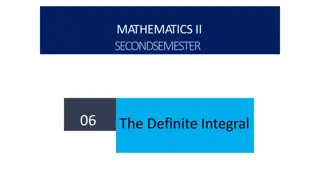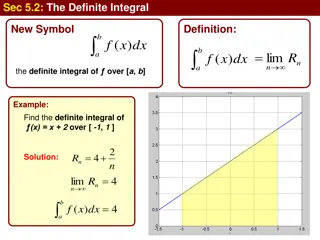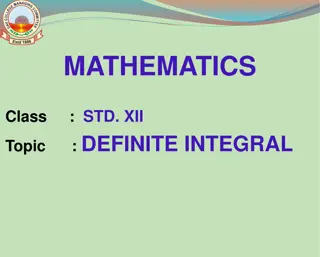An Lp Theory for Outer Measures: Application to Singular Integrals II
This discussion covers various topics such as tents (or Carleson boxes), outer measures on the open upper half-plane, sizes of functions on tents, outer essential supremum on subsets, outer Lp spaces, embedding theorems, and estimates related to Linfity-Sinfty and weak L1-Sinfty. The content delves into defining super-level measures, Lp norms, Lorentz space, and provides proofs for embedding theorems using interpolation methods.
Download Presentation

Please find below an Image/Link to download the presentation.
The content on the website is provided AS IS for your information and personal use only. It may not be sold, licensed, or shared on other websites without obtaining consent from the author.If you encounter any issues during the download, it is possible that the publisher has removed the file from their server.
You are allowed to download the files provided on this website for personal or commercial use, subject to the condition that they are used lawfully. All files are the property of their respective owners.
The content on the website is provided AS IS for your information and personal use only. It may not be sold, licensed, or shared on other websites without obtaining consent from the author.
E N D
Presentation Transcript
An Lp theory for outer measures. Application to singular integrals.II Christoph Thiele Santander, September 2014
Recall Tents (or Carleson boxes) X is the open upper half plane, generating sets are tents T(x,s) : Define outer measure on X by
Sizes Sp size of function on a tent Alos Sinfty
Outer essential supremum Space of functions with finite out.ess.supremum Outer essential supremum on a subset F:
Outer Lp spaces Define super level measures Define Lp norms Also weak Lp (Lorentz space)
Embedding theorems Thm: Define for fixed Schwartz function Then we have: If has integral zero:
Proof of embedding thm for Sinfty size By Marcinkiewicz interpolation between and
Linfty-Sinfty estimate To show for all tents T(x,s) But this follows from
Weak L1-Sinfty estimate Ned for all lambda Need to find a collection of tents T(xi,si) with union E such that for all x,s
Weak L1-Sinfty estimate Hardy Littlewood maximal function There is an open set where Mf is larger than lambda. Let (xi-si,xi+si) be the collection of connected components of this set. These are the tents. By Hardy Littlewood maximal thm
More on weak L1-Sinfty estimate We have Since F(y,t) is testing f against bump function at y of width t, may estimate by Hardy Littlewood
Proof of embedding thm for S2 size By Marcinkiewicz interpolation between and
Proof of Linfty-S2 estimate Apply Calderon reproducing formula. If we integrate over arbitrary tent T(x,s), only restriction of f to X-Cs,x+Cs matters if phi has compact support Dividing by s yields the desired
BMO estimate Note that we have in fact proven for any m Thus we have the stronger embedding theorem For the space BMO, which is defined by
Weak L1-S2 estimate Let (xi-si,x-+si) be the connected components of the set where Mf(x) is larger than lambda/2. Let E be the union of tents T(xi,3si). Do Calderon Zygmund decomposition of f Where g is bounded by lambda, and bi is supported on interval xi-si,xi+si and has integral zero.
Weak L1-S2 estimate For the good function use Linfty estimate. For bi, do a careful estimate and accounting using 1) Partial integration of bi to use mean zero when paired with a phi-t of large support 2) Support considerations of bi and phi when paired with phi-t of small support. .
Summary of proof of embedding thm Encodes much of singular integral theory: Hardy Littlewood maximal theorem, Vitali covering arguments Calderon reproducing formula, BMO estimates, square function techniques, Calderon Zygmund decomposition
Use to prove boundedness of operators Suppose we have operator T mapping functions on real line to functions on real line. Want to prove (If T is commutes with dilations, it is forced that Both exponents are the same)
Use to prove boundedness of operators Duality implies Hence it suffices to prove
Use to prove boundedness Express <Tf,g> by Fphi and Gphi and prove Where either S is S2 or Sinfty, as the case may be By outer Hoelder suffices to prove Which itself my be result of outer triangle ineq.
Example identity operator By polarization of Calderon reproducing f.: Provided phi has mean zero and Triangle ineq. and outer triangle ineq. imply
Cauchy projection operator By polarization of Calderon reproducing f.: Provided phi has mean zero and Boundedness of identity operator and of Cauchy projection imply that of Hilbert transform
Paraproduct estimates For three Schwartz functions If two Schwartz functions have integral zero
Special paraproducts Paraproducts ard trilinear forms which are dual to bilinear operators If phi-2 has mean 1 and f2 is 1, then F2 is 1 And we are redued to previous case. In particular there is a paraproduct with Fixing h and considering as operator in f we have An operator with
Basic T(1) Theorem Let T be a bounded operator in L2 with where For some nonzero test function phi with mean zero. Then for 1<p<infty we have for all f, with universal constant Cp independent of T
Why T(1) theorem? Usually have a different set of assumptions. If s<t<|x-y| then we write and demand suitable pointwise estimates on the partial derivative of K (Calderon Zygmund kernel). Symmetrically if t<s<|x-y|
Why T(1) theorem? We further demand T(1)=0 If |x-y|<s and t<s, then we write And again demand suitable bounds on K. Similarly we ask T*(1)=0 to address the case|x-y|<t, s<t
More general T(1) theorem It suffices to demand T(1)=h, T*(1)=0, for some h in BMO. One reduces to the previous case by subtracting a suitable paraproduct: Similarly one can relax the condition on T* by subtracting a dual paraproduct.
Proof of T(1) theorem By Calderons reproducing formula At which time we use the assumption. To apply outer Hoelder, we break up the region, e.g |x-y|<s, t<s where we obtain
Proof of T(1) theorem Applying Fubini Setting Gab(x,s)=G(x+as,bs) and using outer triangle inequality
Proof of T(1) theorem Applying outer Hoelder Integrating trivially:
Proof of T(1) theorem Using embedding theorem (a modified one with tilted triangles for Gab) Similarly one proves this estimate for the other regions other than|x-y|<s, t<s.
